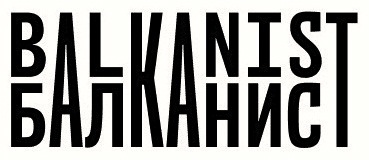
15 Photos
Now that the newly elected rebel leaders of the self-declared Donetsk and Lugansk Peoples’ Republics have taken office, the West believes that long-held fears about a “frozen conflict” taking shape in eastern Ukraine might finally become a reality.
The post-Soviet landscape is already scarred with several unrecognized pseudo-statelets that have emerged from the ruins of Kremlin-instigated separatist wars. Moscow is fond of these so-called “frozen conflicts” because they guarantee Russia’s continued regional influence, and can prevent or hinder countries in its old Soviet sphere of influence from doing things like joining the EU or NATO. (Aspirants to the latter alliance are disqualified if they have any unresolved territorial disputes).
And now it looks like Ukraine may enter this weakened state of Kremlin-engineered paralysis. What countries are already in such a state already and how are they doing? Let’s take a look at a few of the Moscow-manufactured “powder kegs of Europe”.
Abkhazia & South Ossestia (Georgia)
The central government in Tbilisi fought a brutal but forgotten campaign in the 1990s to subdue the separatist ethnic groups that inhabit the regions of Abkhazia and South Osettia. After the cessation of armed conflict, the conflicts were generally “frozen” for years. Moscow, meanwhile, issued residents of Abkhazia and South Ossetia Russian passports.
Kosovo’s unilateral declaration of independence from Serbia in January 2008 is believed to have influenced Russia’s foreign policy a great deal. Tensions between the government in Tbilisi, the Kremlin, and the two territories continued to escalate. That summer, Georgian forces carried out orders given by President Mikheil Saakashvili and attacked South Ossetia using what has been widely characterized as “disproportionate force”. Russia invaded, claiming the right to protect its passport-holding citizens. Georgia was swiftly defeated, and Russia recognized the independence of Abkhazia and South Ossestia shortly thereafter.
Abkhazia is on the Black Sea coast, and is often referred to as the “jewel of the ‘Soviet Riviera’”. The quasi-state was once a major resort destination for the sun-bathing nomenklatura, and has received a decent amount of foreign investment from Russia in recent years to retain its status as the mecca of Soviet tourism. Russian vacationers still visit the bargain beaches each summer.
But most of the news in Georgia’s breakaway republics is not so sunny. Abkhazia’s prewar population of 535,000 is now half of what it was. And South Ossetia, which lacks any similar reputation for Soviet resort tourism, is in an infinitely worse “quasi-state”.
The Government of Abkhazia’s website lists three diplomatic missions abroad: in Moscow, the Venezuelan capital of Caracas, and South Ossetia.
Russia has been tightening its control over both South Ossetia and Abkhazia, to the apparent dismay of some Abkhazians and Ossetians who were promised some autonomy. Experts have suggested that for its part, the Georgian government might consider reaching out to people living in the quasi-states.
The Kremlin has sought more influence in Georgia lately, likely owing to the country’s recent signing of an Association Agreement with the EU. And right now, the government in Tbilisi is experiencing a major crisis due to differences in opinion as to the country’s path to Euro-Atlantic integration, and disagreements between state officials in opposing pro-West and pro-Kremlin camps.
Nagorno Karabakh (Azerbaijan)
In 1988, a war of secession fought between Nagorno Karabakh’s ethnic Armenian majority and the Republic of Azerbaijan resulted in 30,000 casualties. A ceasefire was called in 1994, and Azerbaijan was forced to accept the loss of 14 percent of its territory.
An article in the Economist from September says the sporadic violence in the quasi-state is the worst it’s been since the ceasefire was signed 20 years ago. At least 13 people were killed in August alone. Experts warn that there exists a real danger of “a return to war by accident”. Russia, in this case, is said to supply weapons and cash to both sides. And Putin gave a speech last year vowing that Russia would not abandon the region, but rather was intent on strengthening its presence there.
Nargorno Karabakh is also home to what is allegedly the largest ghost town in the world – a grim distinction which speaks to the number of internally displaced persons created by “frozen conflicts”. In 1993, the roughly 100,000 residents of the city of Agdam fled their homes and never returned.
The outlook for Nargorno Karabakh certainly appears dim, but some South Caucasus experts say the crisis in Ukraine has provided international mediators an opportune moment to reassess the changing nature of the crisis.
Transnistria (Moldova)
The territory of Transnistria broke off from Moldova during the 1990 – 1992 war. Russian troops fought on the separatists’ side, but never recognized the self-proclaimed quasi-state. These days, Western journalists visit Transnistria and file identical reports about a “Soviet time capsule” or a “land frozen in time”. What’s significant, however, is that Transnitria has some industry, and its economy isn’t doing all that bad compared to Moldova’s. It produces linens for EU export, and has one of the most modern football stadiums in Europe, which is home to its own team, FC Sherriff. Stranger still, a secretly recorded telephone conversation between the Transnistrian interior minister and a Ukrainian official has recently cast some doubt as to the degree of the separatist Soviet enclave’s true devotion to Moscow.
But “frozen conflicts”, marked as they are by chronic instability, recurring episodes of sporadic violence, and the calculated creation of countless internally displaced persons for the exclusive benefit of Kremlin billionaires, must not continue to proliferate like forest mushrooms along Russia’s 20,241-kilometer border. Hopefully, since someone smart was able to figure out nuclear deterrence and the atom bomb, someone else will be able to come up with a model for containing Transnistrification.
Photos in gallery (L – R) : Transnistria: Siim Männik, Desmond Kavanagh, Marco Fieber, Nagorno Karabakh: ale_speciale, Photo RNW.org, Photo RNW.org, Abhkazia: alenka_getman, Stefan Krasowski, Stefan Krasowski, Lilit Matevosyan, Lilit Matevosyan, Lilit Matevosyan, Marco Fieber, Marco Fieber, Osinform Information agency, ИА ОСинформ
















